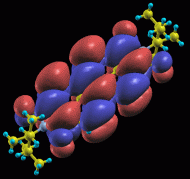Select one of the links below for more information about the individual research areas.
Our group is working in the field of Coherent X-ray Scattering and Coherent X-ray Diffractive Imaging (CXDI). The method is based on the following principle: if an object of finite size is coherently illuminated and its diffraction pattern is sufficiently sampled then it can be uniquely inverted (R. H. T. Bates, 1982) to obtain an image of this object. As no lenses are required in this imaging technique (therefore also known as lensless microscopy) it allows us, at least in principle, to overcome the resolution limits of conventional microscopy techniques and to obtain diffraction-limited images of a sample using phase retrieval techniques (R.W. Gerchberg&W.O. Saxton, 1972; J. R. Fienup, 1982; V. Elser, 2003). This idea was originally proposed by D. Sayer (1952) and has been developed by different groups around the world.
X-ray structure determinations normally determine the structure of the electronic ground state of molecules. However, all processes involved in the colorful and living world, e.g. organic light emitting diodes or photosynthesis, proceed via excited states. The course of excitation and subsequent relaxation to the ground state, often by passing different intermediate excited states, can be well investigated using spectroscopic techniques. But the excited state structures have remained inaccessible until a few years ago. The lack of knowledge of the structure of the excited states is also the reason for many computational approaches to fail in calculating spectroscopic properties, especially of metal organic compounds. The pulsed structure of synchrotron radiation allows so called 'pump and probe' experiments to be conducted and hence the exploration of the excited state structure.
Ultrashort pulses of intense radiation emitted from free-electron-lasers (FELs) are powerful tools for the investigation of the static and dynamic properties of matter down to atomic length scales. For applications of FELs we need to understand quantitatively how the FEL radiation interacts with matter, including the extreme case of the focussed laser beam. Our theoretical group investigates the interaction of FEL radiation at VUV and X-ray wavelengths with atomic clusters, large biomolecules, and solids. The tools used are kinetic Boltzmann equations and molecular dynamics simulations. Our results are important for understanding existing experimental results and for planning future experiments with FELs, in particular for planning experiments on single particle diffraction imaging.
Radiation damage is one of the remaining bottlenecks for structural investigations of biological objects with crystallographic or microscopic techniques using synchrotron radiation. Radiation damage is dose dependant and limits the structural information accessible in a diffraction experiment. Even though many aspects of radiation damage are very well described in the literature, a consistent model for radiation damage covering all the different aspects has so far not been described. Our work in the field of radiation damage includes theoretical Monte Carlo simulations as well as experimental work aiming at the analysis of different radiolysis products, exploring the dependence of radiation damage on the crystal habit and size, and investigation on the dependence on solvent content and temperature. We further explore the potential of new data collection techniques with micro X-ray beams and serial crystallography.
The new synchrotron storage ring Petra-3, currently being built at the DESY site in Hamburg, will become operational in spring 2009. Petra-3 will produce extremely brilliant X-ray radiation allowing for new kinds of experiments. In particular micro-beam techniques will benefit tremendously from the very low emittance of only 1 nmrad which enables us to deliver more than  ph/sec in a spot size of about 1 µm x 4 µm (v x h). To benefit fully from these new opportunities, the development of new hardware components with very high mechanical stability is required.
ph/sec in a spot size of about 1 µm x 4 µm (v x h). To benefit fully from these new opportunities, the development of new hardware components with very high mechanical stability is required.










